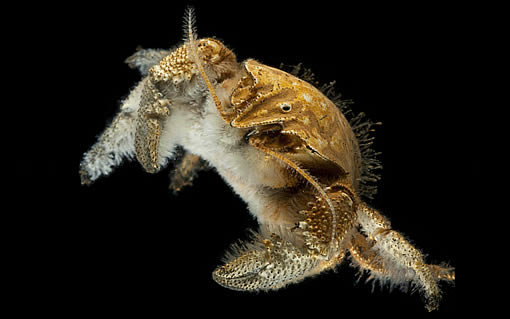 |
| Image Source: Natural Environment Research Council |
So far only three species of the Yeti crab have been identified and the scientists haveexplained the unique characteristics of these three species. It is also notable that Kiwa tyleri is the only species that can survive in Southern Ocean off Antarctica. The scientists reported in their study,” Here, we describe Kiwa tyleri sp. Nov., the first species of Yeti crab known from the Southern ocean. Kiwa tyleri belongs to the family Kiwaide and is visually dominant macrofuna of two known vent sites situated on the northern and Southern segments of the East Scotia Ridge.” It was also reported that these crabs live together and quite densely –approximately 700 crabs per meter. This creature was first photographed by the scientists in 2010 using a remotely operated submersible vehicle, but since then, computed tomography CT scanning and genetic sequencing were used to find more about the creature.
The reason for these crabs to be living together, packed so tightly is the water temperature. The temperature beyond their community is frigid and it fluctuates between 30 and 33 degrees Fahrenheit. Despite the temperatures, some crabs do leave their community. The female crabs have to leave the vents so that they can brood their eggs as they won’t survive in the vents. However, the females are not strong enough to make it on the trip back home and hence, die.
The Yeti crabs have spines on its legs that support them to climb these chimney structures that are usually there at the vent locations. This is how they can position themselves to the right place where the conditions are good for food production.



















